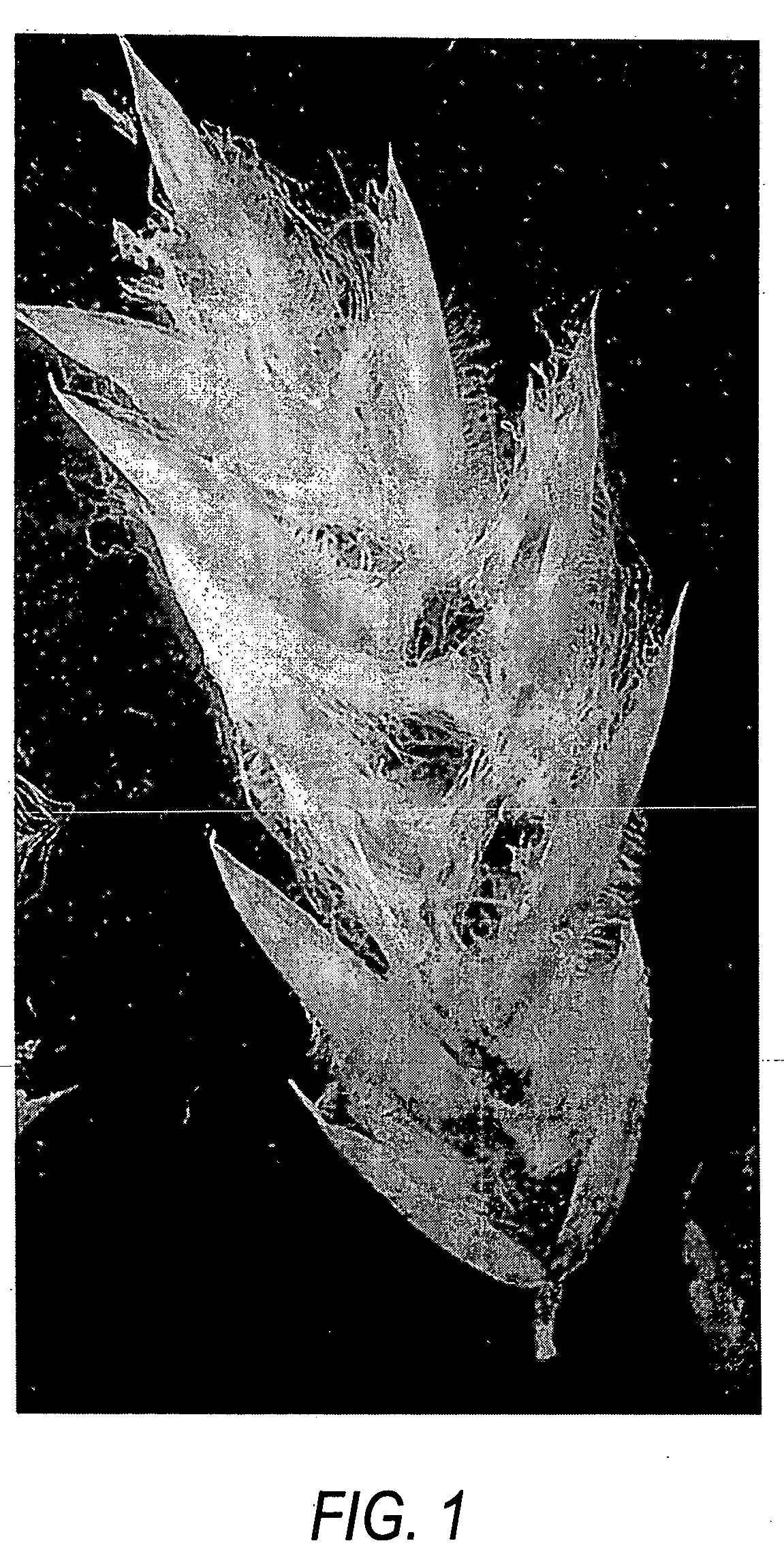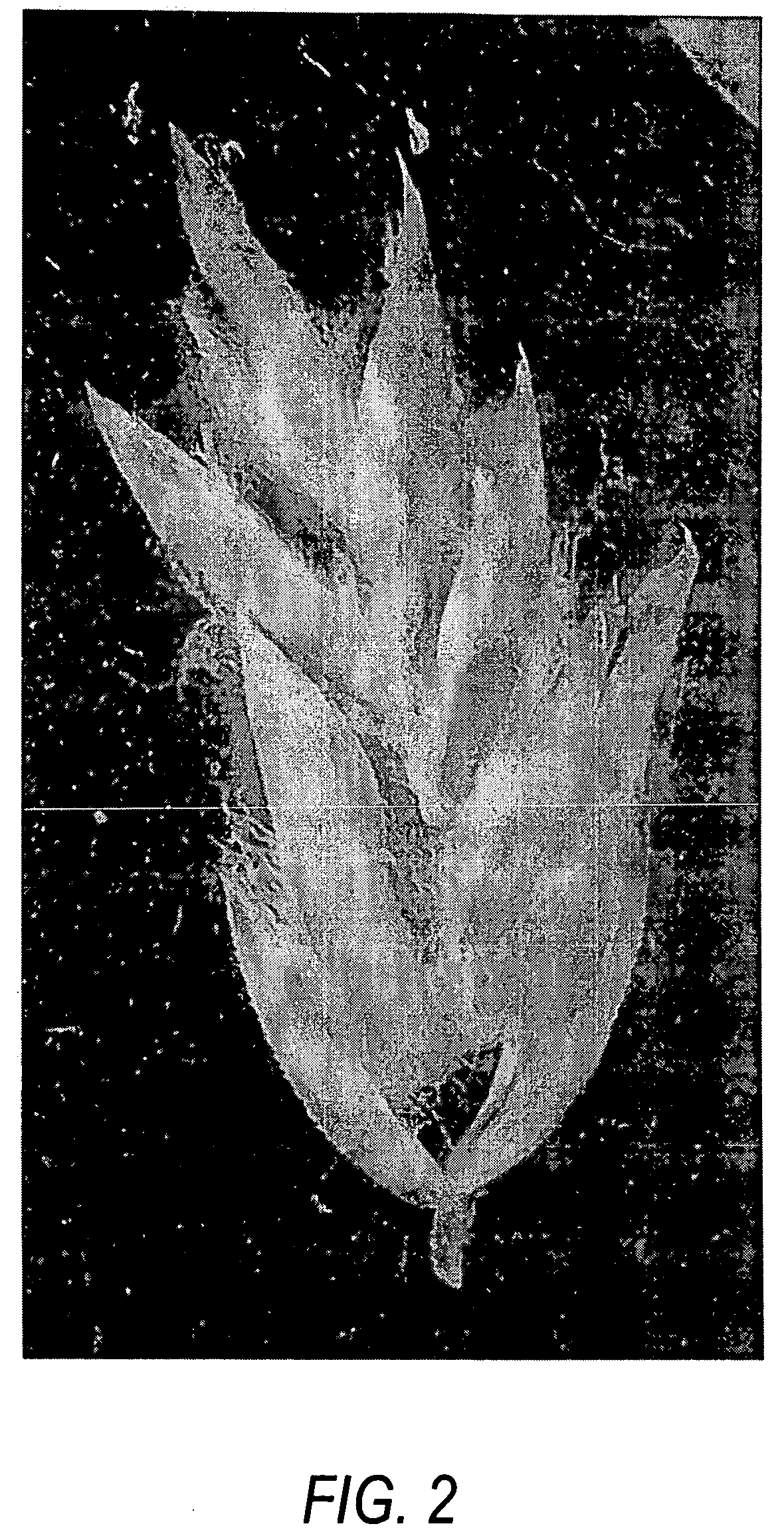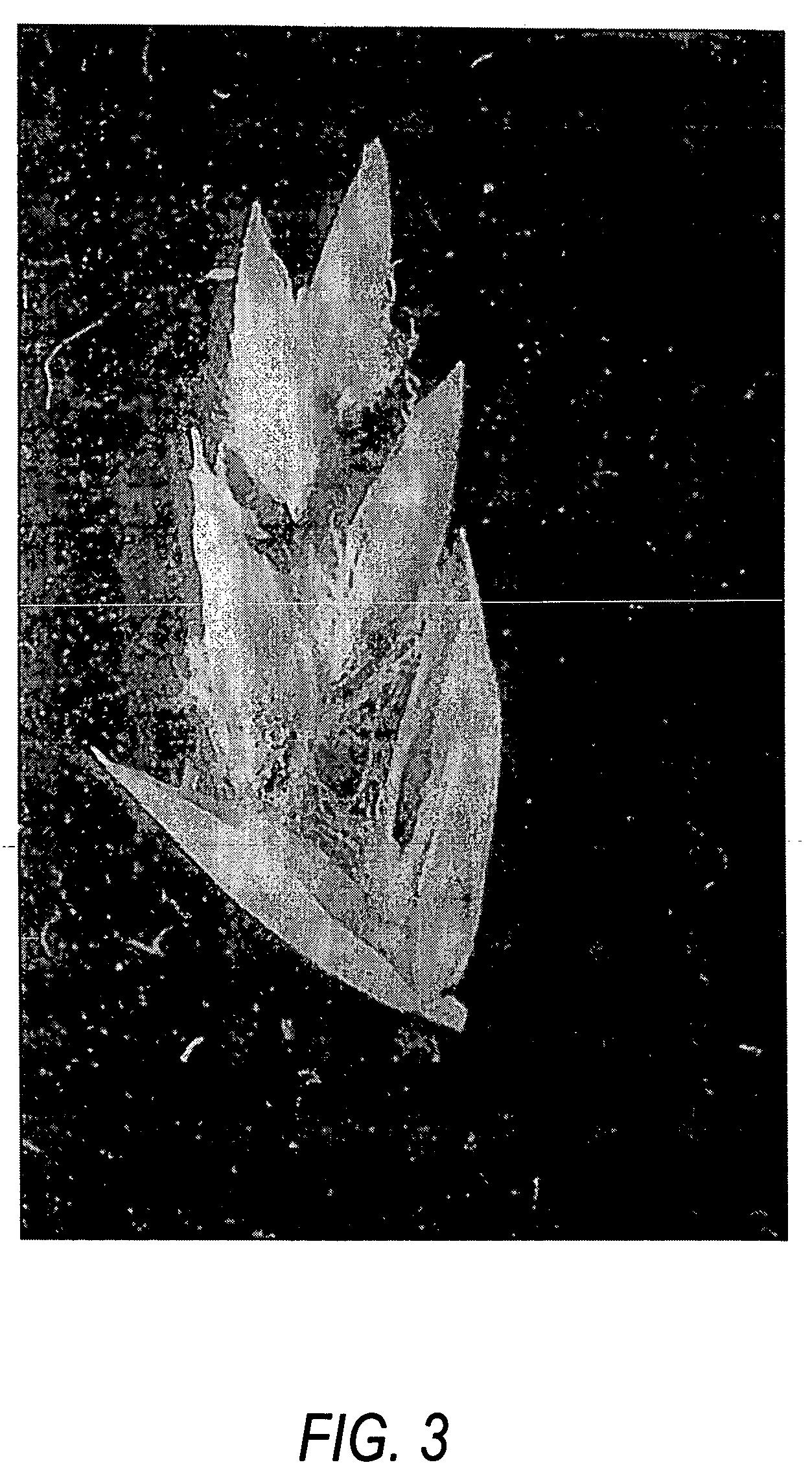Hybrid bluegrass plants and seeds
a hybrid and bluegrass technology, applied in the field of hybrid bluegrass plants and seeds, can solve the problems of not being developed for commercial use, affecting the growth of bluegrass, and generally dissolving of macrospore, and achieves the effects of improving the quality of turfgrass, reducing the number of seedlings, and increasing the time for seedling emergen
- Summary
- Abstract
- Description
- Claims
- Application Information
AI Technical Summary
Benefits of technology
Problems solved by technology
Method used
Image
Examples
example 1
6.1. Example 1
Breeding And Selection of Poa arachnifera×Poa pratensis Hybrid ‘HB 129’
[0067] The ‘HB 129’ bluegrass variety is an example of a plant produced by the methods of the invention having been selected from the progeny of Texas bluegrass (Poa arachnifera Torr.) female plant 10-10 (seed parent), with cv. ‘Geronimo’ Kentucky bluegrass (pollen parent) (Poa pratensis L.).
6.2. Selection of Parent Plants
[0068] The seed parent plants were selected from Poa arachnifera Torr. plants based on improved turf characteristics, including, but not limited to, increased tiller density, leaf color, and plant height, in comparison to typical cultivars and wild types of Poa arachnifera Torr. Methods for measuring such characteristics are well known in the art. The pollen parent plants were selected from Poa pratensis L. plants based on increased seed production and increased inflorescence number, in comparison to typical cultivars and wild types of Poa pratensis L.
6.3. Breeding Methodology
[...
PUM
 Login to View More
Login to View More Abstract
Description
Claims
Application Information
 Login to View More
Login to View More - R&D
- Intellectual Property
- Life Sciences
- Materials
- Tech Scout
- Unparalleled Data Quality
- Higher Quality Content
- 60% Fewer Hallucinations
Browse by: Latest US Patents, China's latest patents, Technical Efficacy Thesaurus, Application Domain, Technology Topic, Popular Technical Reports.
© 2025 PatSnap. All rights reserved.Legal|Privacy policy|Modern Slavery Act Transparency Statement|Sitemap|About US| Contact US: help@patsnap.com



